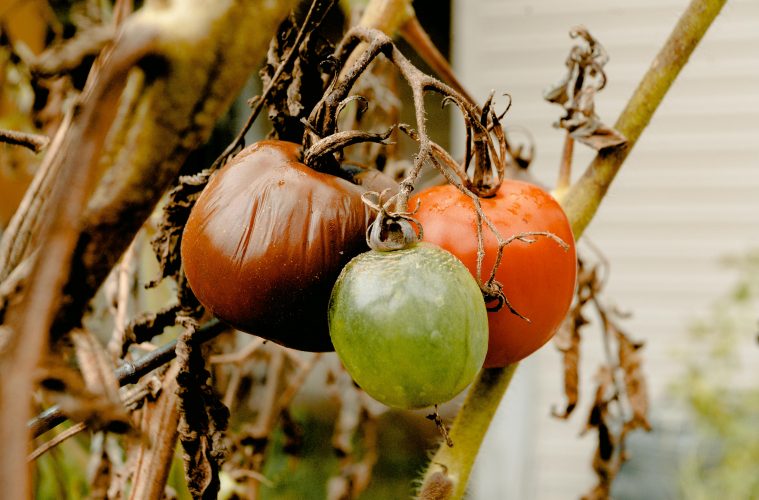Tomatoes are irresistible to a range of pests, but few cause as much late-season trouble as tomato russet mites. These microscopic arachnids are almost impossible to see without a loupe, yet their damage is obvious. They gather on the undersides of leaves, pierce soft tissue and sap the plant’s strength. The first signs are fine stippling and a bronzed sheen on lower foliage, followed by yellowing and leaf drop. Fruit skins may toughen and show longitudinal cracking, while stems can appear dull and dry.
What tomato russet mite damage looks like
Tomato russet mites are microscopic arachnids that feed by piercing soft tissue. You will notice fine stippling first, then a bronzed sheen on lower leaves that turns yellow before foliage drops. Fruit skins can toughen and crack lengthways, while stems take on a dull, dry appearance.
Where they strike and how they spread
These mites love warmth and dryness and move on wind, clothing, pets and tools. They feed across the nightshade family, so watch peppers, brinjals, potatoes, tomatillos and weedy nightshades such as datura. Mixed plantings with unrelated companions slow the march through beds.
Hygiene that shuts down overwintering
Clear spent vines and fallen leaves after the season so mites have nowhere to hide. Pay attention to greenhouse corners and empty pots. Dispose of diseased material away from beds or hot-compost it. Uproot nightshade weeds early and clean tools with isopropyl alcohol between plants.

Pexels
Grow sturdier, less vulnerable plants
Mulch two to three centimetres deep to steady soil moisture and temperature. Stake or trellis to lift foliage into moving air. Water at the base to keep roots evenly moist and transplant during mild spells so seedlings establish without stress.
What to do when mites appear
Skip sulphur, which is not effective on this pest, and avoid broad-spectrum sprays that harm beneficials. Use a firm daily hose-down of leaf undersides, stems and fruit for a week or two, taking care to limit soil splash. Avoid heavy pruning that weakens plants as mites outrun the cuts.
When to remove and reset
If a plant is heavily defoliated and populations are climbing, remove it to protect the rest. Dispose of it securely or hot-compost it, then review spacing, sanitation and watering to avoid a repeat
ALSO SEE:
Featured Image: Pexels

